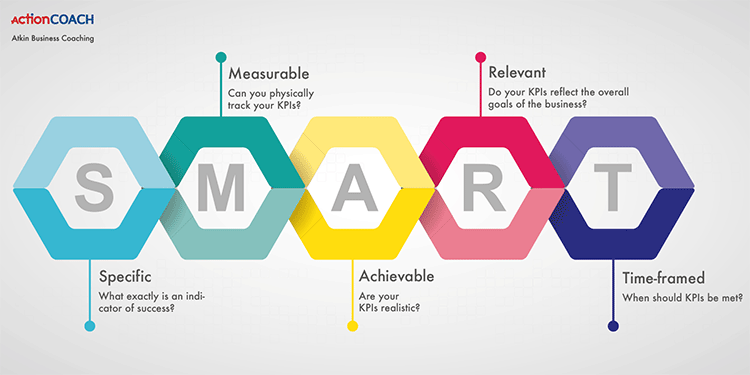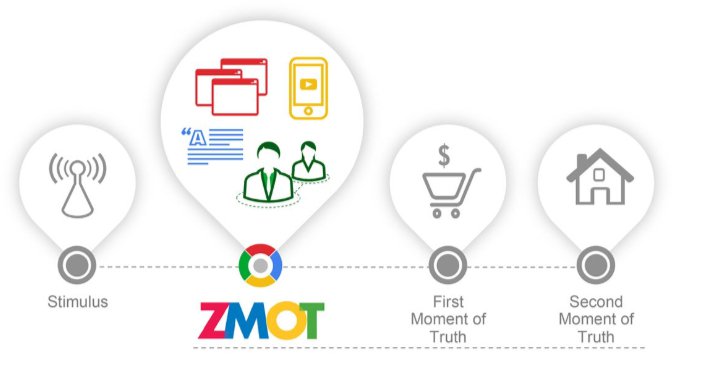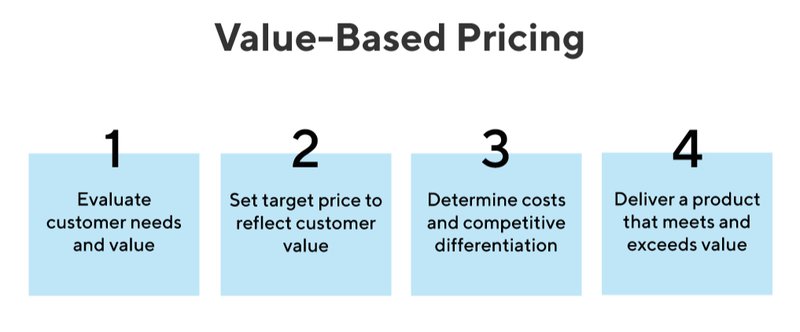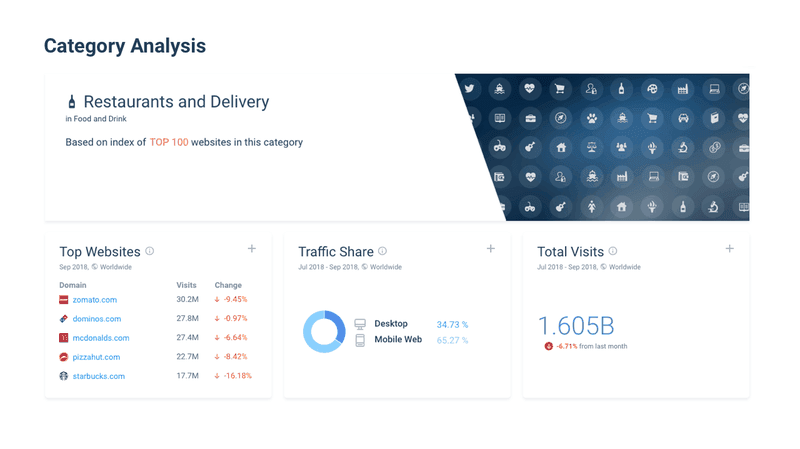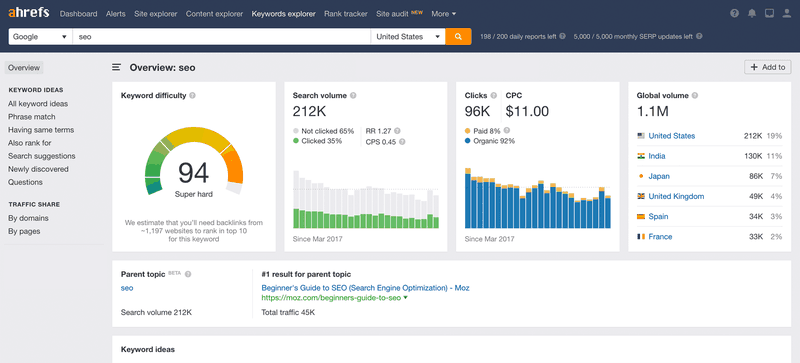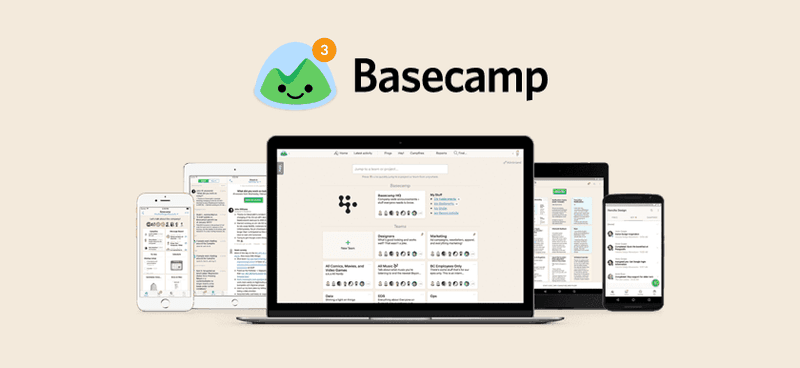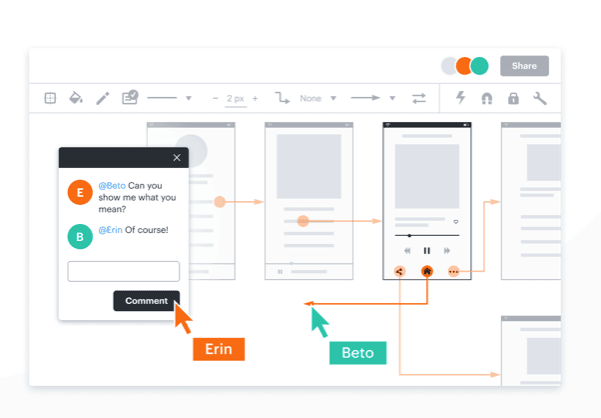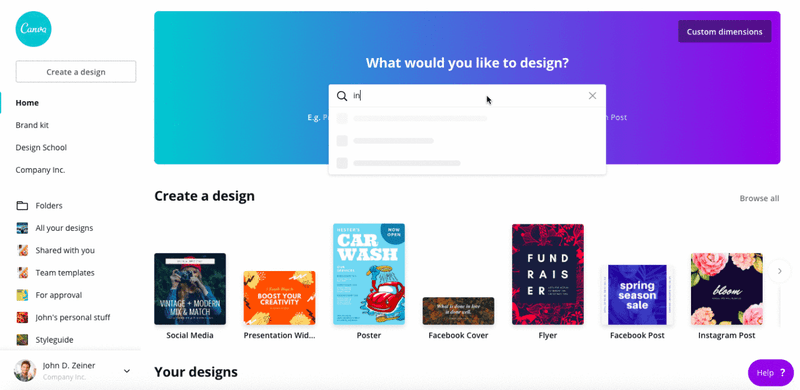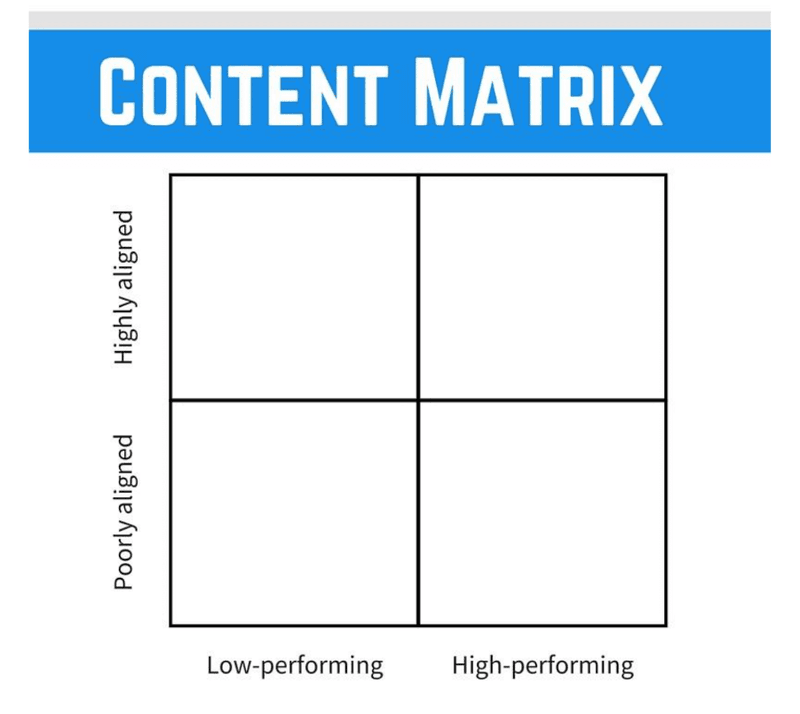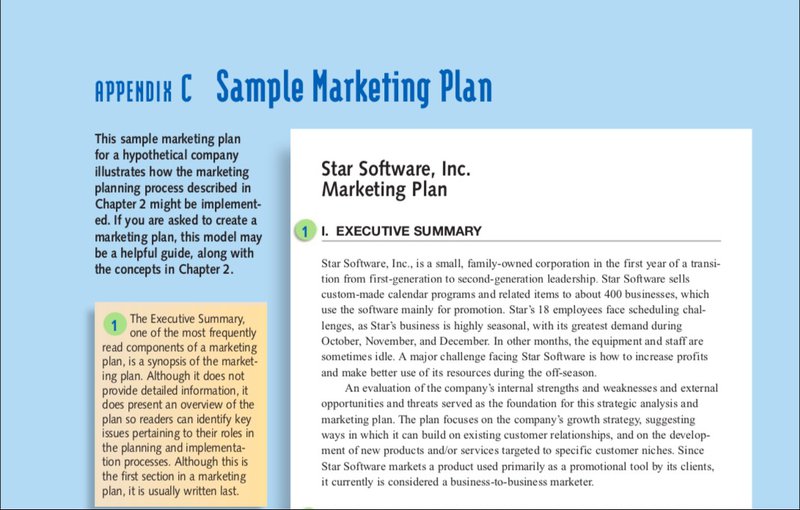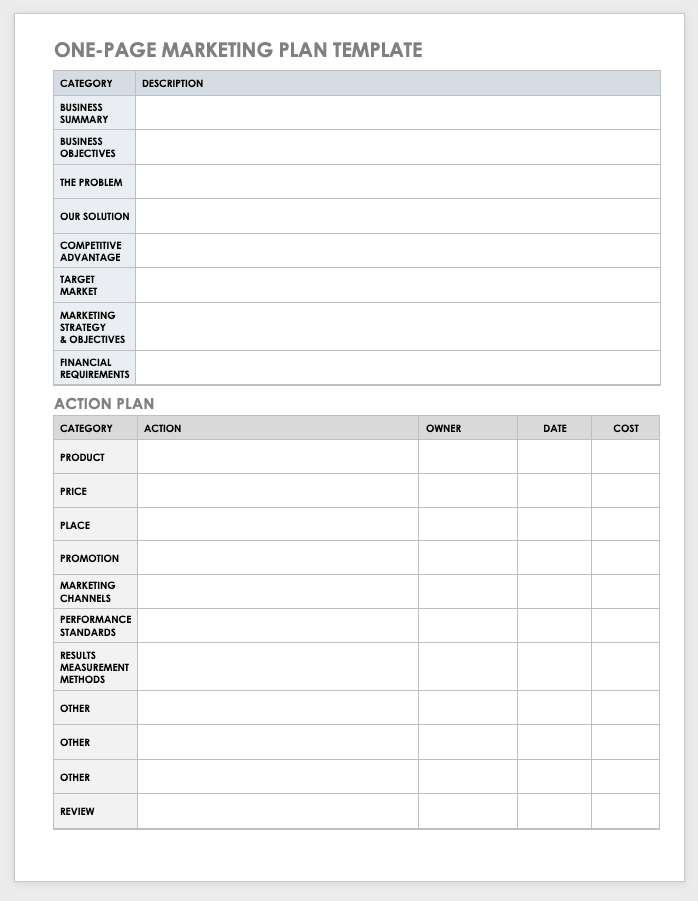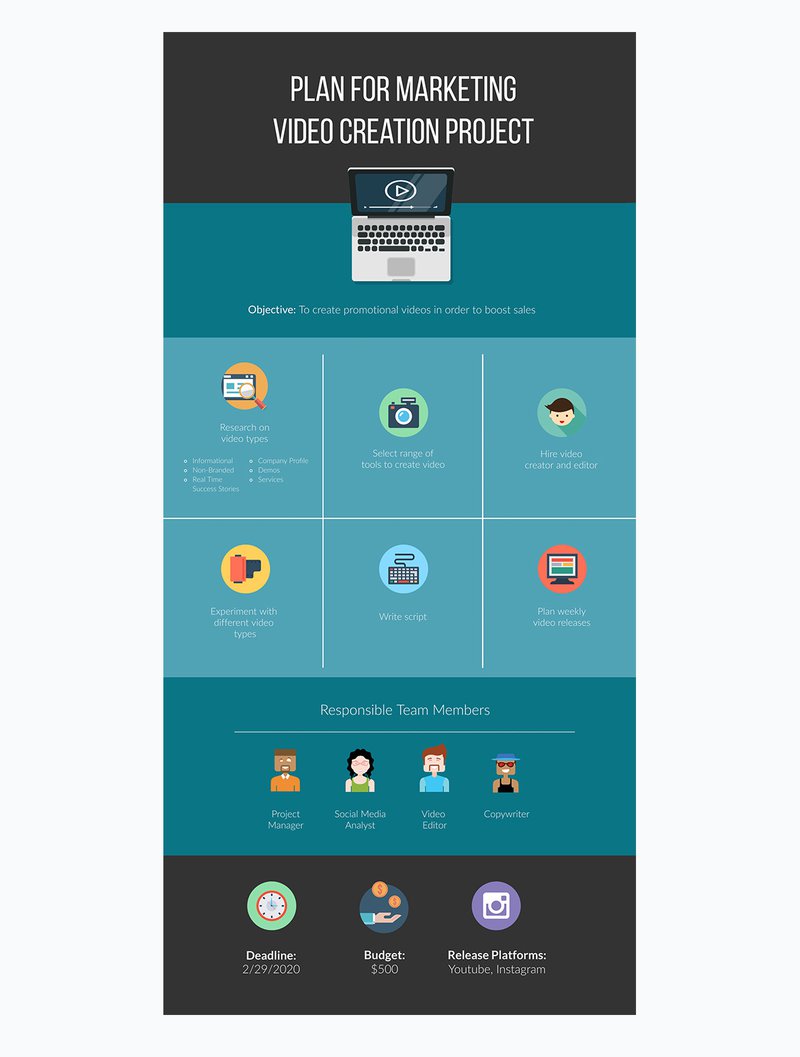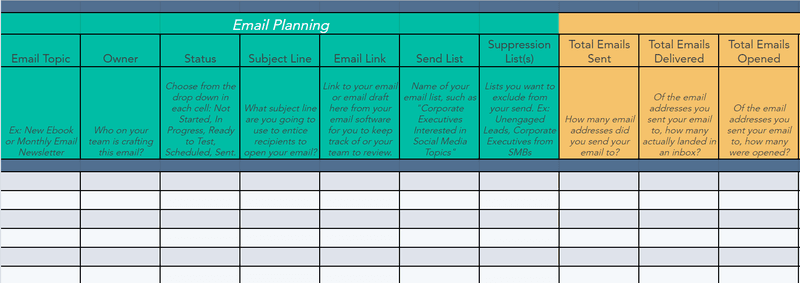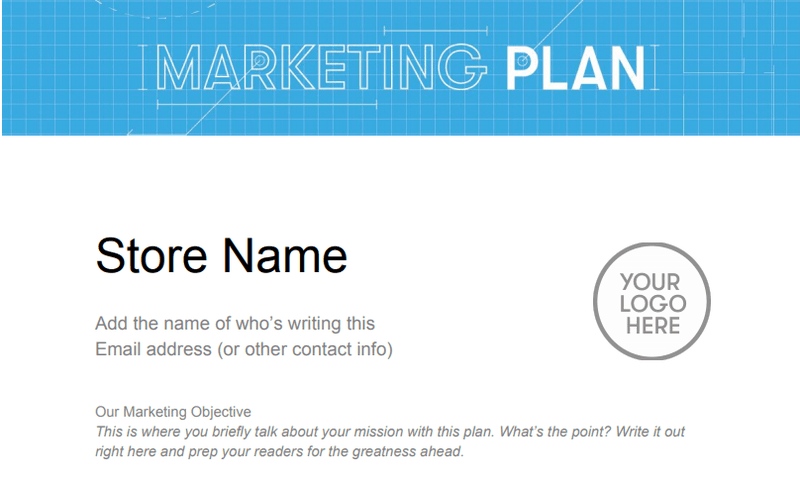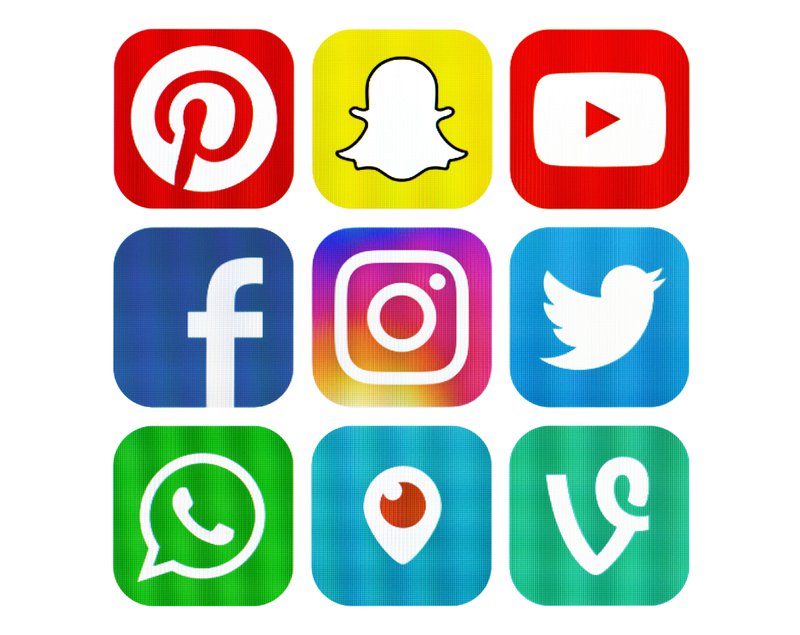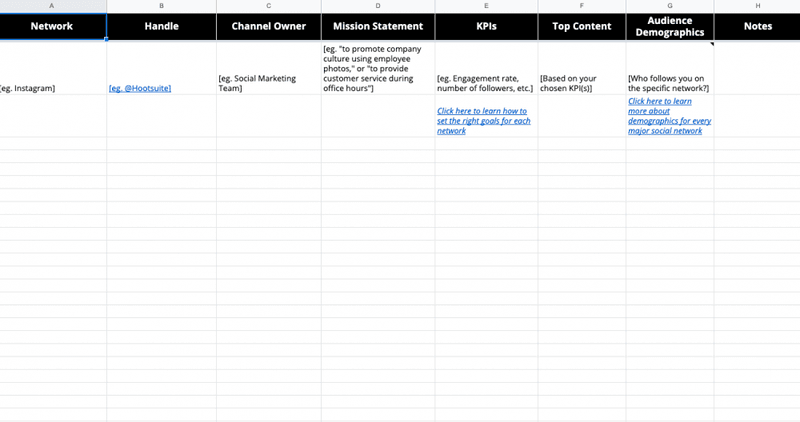The Ultimate Marketing Plan Template For 2025 [FREE]
The Ultimate Guide to Creating a Marketing Plan. Get our marketing plan template for FREE + Budget plan + Calculators + best marketing toolkit for 2024.
Updated November 7, 2024
![The Ultimate Marketing Plan Template For {year} [FREE] main image](https://entail.mayple.com/en-assets/mayple/650088e0cb774e97df948465_2020plantemplate_62bf744fa2ed5695822ec7ef32e72f92_2000-1699777110763.png)
It takes time to build a marketing plan and it will change anyway, right? 100%. But creating your digital marketing plan is worth every minute of your time. If you build a business without a marketing plan, it’s like constructing a house without a blueprint. And you need a really good marketing plan template to get you on the right track.
Before we give out all the information and knowledge you need to create your winning marketing plan, let's start by giving you a FREE Digital Marketing Plan Template for 2024. This is a great example of a great marketing plan that looks snazzy, too 😉.
Click on the image below, and make your own copy or download it to start using this template today.
Now that you have your marketing plan template, let's go over some basics before diving into more advanced aspects of marketing planning.
What is a marketing plan?
A marketing plan is a document that details how you're going to execute your strategy. It's written for a specific period of time and explains both your current situation and your future plans.
What’s the difference between a marketing plan and a business plan?
A marketing plan may be part of an overall business plan. A solid online marketing strategy is the foundation of a well-written marketing plan. While a marketing plan contains a list of actions, without a sound strategic foundation, it is of little use to a business. It has to have a set of concrete tasks and marketing tactics to follow.
Why do you need a marketing plan?
There are a ton of reasons why every brand and marketing team needs a good marketing plan.
Here are the top 3 reasons:
Create better goals
When you have specific goals to achieve you can plan your way to achieve them. Having too general goals like "growing my business" VS. measurable KPIs like "I want to grow my revenue by $600K, and to do that I need 1,000 new customers" is different.
Actual KPIs can help you plan exactly what will get you there. We recommend you set up some SMART goals - which stands for specific, measurable, achievable, relevant, and time-framed.
Improve your focus
Marketing without focus can be very messy and super ineffective. Have you ever tried to run a company meeting without an agenda? Just like meetings, marketing needs focus.
The best tip we can give you is to focus on specific activities and have them done well. A digital marketing plan will help you focus on exactly the tasks that will impact your success.
Of course, things will change and your plan will change as well. But as long as you are using a good marketing plan outline you will have your next month’s tasks written down and your work will become that much more effective.
Stay consistent
The purpose of a marketing plan is to ensure that marketing activities are relevant and timely to achieve the organization's business objectives. It's a plan defining a sustainable competitive position and defining the resources necessary to achieve it.
Now that you know what a marketing plan is and what’s used for let’s talk about the key components that it’s built out of.
How do you make a good marketing plan?
A good marketing plan should have the following parts -
- Executive Summary
- Mission statement
- Market Analysis (SWOT)
- Competitor Analysis
- Target market & buyer personas
- Marketing objectives and KPIs
- Pricing strategy
- Growth strategy
- Marketing channels
- The Budget
And as a bonus we’ve added two more sections:
11. BONUS: How to assemble the right marketing team 12. BONUS: Top tools for marketing plan creation & design
Each of these key elements is vital for the right execution of your marketing strategy and I promise you it’s not as difficult as it looks.
Let’s dive in.
1. Create an executive summary
This might seem a little too formal for some marketers out there but it’s essential and I’ll explain why.
Marketing plans tend to get really long so it’s better to create a quick summary and highlight some of the key points of every aspect of your plan right at the beginning. This becomes the foundation of your marketing plan.
There is no set length for an executive summary but it should cover all of the main elements of your marketing plan. It should also quickly tell your story and highlight what you are trying to achieve. Add your KPIs, marketing channels, market strategy, and budget.
A good executive summary should give a quick taste of the entire plan and entice the reader (investor, upper management, CEO, etc) to read the rest.
Here’s a great 2-minute video from Hubspot that shows how to write an executive summary from start to finish.
The next section of the marketing plan has to do with your “why”.
2. Create a mission statement
A good mission should have 3 critical components -
- An overall mission or vision of the company
- The company’s core values
- The goals and marketing objectives
The key is to keep it precise, short, and powerful. Don’t write a long essay, don’t just throw a bunch of jargon around, and do get some input from the employees at the company.
Employee feedback on this is critical because marketing and sales activities have to align with the mission of the company so all the various teams in the business have to be in agreement on the general mission.
The worst thing you can do is have a mission that has no direct correlation to the actual activities or tasks. Such a mission won’t help you grow your business.
What’s the difference between the company vision and its mission?
The vision is like the why, the overarching goal and foundation of the company. The company’s mission includes the vision and adds to it the actions and activities that the company will do to help advance its vision. Here’s a great video by Simon Sinek that explains this concept.
Now let’s talk about how you are going to go about achieving that mission.
The first step is to understand the market and your particular industry.
3. Market analysis
Have you ever seen the TV show Shark Tank?
The first part of any pitch is a personal story and a quick description of the founders’ “why”. This is where you can find the vision and mission of the company.
Next, they almost always mention the size of the market and they quantify the opportunity that they are presenting to the sharks.
This is exactly what a market analysis is.
A market analysis is a quantitative and qualitative assessment of a market. It looks at the size of the market in terms of the value ($) and volume (quantity of product sold) and often highlights some of the latest trends or environmental conditions that define the opportunity cost.
So how do we do this?
A great way to structure this is by using the SWOT analysis technique.
What is a SWOT analysis?
A common marketing framework that can help you create a good marketing analysis is called the SWOT framework. It stands for strengths, weaknesses, opportunities, and threats.
Strengths - what is your company really good at? what makes you unique? what unique advantages do you have over your competition? What is your value proposition? What are some of the key resources, processes, and capabilities that your company has?
Weaknesses - what are the weakest points of the business? What are some of the areas in which you could improve on? What is your company lacking compared to your competitors?
Opportunities - what are the biggest trends in the market that could give your company an edge or an advantage? These could be demographic patterns, lifestyle choices, population dynamics, or governmental regulatory policies.
Threats - what are some of the external factors in the market that could negatively impact your business? What are some environmental factors that you should be aware of? What are some possible changes that could threaten your business performance and success?
Pro tip: Want to do your own SWOT analysis? Get our Marketing SWOT Analysis Template.
4. Competitive analysis
The next vital step is to understand your competition and what the competitive landscape looks like in your industry or niche.
The main questions your competitive analysis should answer are:
- Who are the competitors?
- What marketing strategies are they employing?
- And how are they going about achieving their goals?
Here’s one of my favorite competitive analysis frameworks from the renowned Myk Pono:
Now that you’ve completed your competitive analysis it’s time to zero in on your ideal customer.
5. Define your target market and buyer personas
The best way to create target personas for any brand is by creating a customer journey map. A customer journey map is a visual representation of all the various touchpoints that your brand has with a prospective customer.
This is a critical part of creating your marketing strategy.
Google introduced the moment of truth concept and this really relates to our discussion of marketing channels but it’s important to mention here as well.
Shoppers can find and interact with your brand through hundreds of channels, both online and brick-and-mortar. The Zero Moment of Truth (ZMOT) concepts represents that stage of the buyer’s journey that leads them to find your product or solution for their problem.
Identifying the specific problem that the customer is looking to solve is critical. This is how you define your persona and this is what ultimately affects the rest of your marketing decisions.
Here's a great buyer persona template from Hubspot to help you create better audience personas.
6. Define your goals and KPIs
The first step when building a marketing plan is to understand and define which business goals are the plan aiming to achieve. Business and marketing should always go hand-in-hand - remember that. Questions you should answer are:
- What are the business goals I need to achieve?
- What KPIs will get me to achieve my goals?
- What does my marketing funnel look like?
Pricing is often part of the market and competitive analysis sections but sometimes brands discuss it separately. It depends on how important price considerations are for your business and how competitive your market is. For example, if a major advantage in your business is that your product is priced significantly lower than your competition then a pricing strategy will play a key role in your marketing plan.
On the other hand, if you are a brand like Apple that is trading on the quality and its other features more than a price comparison, then your focus will be less on price.
There are 5 common pricing strategies:
1. Cost-based pricing
This is when the price is solely based on the costs of the products. The company simply takes the cost it takes to produce the product or service and adds a markup.
2. Value-based pricing
This strategy is based on the perceived value of your product. So a great example here is a company like Apple that prices its products significantly higher than its competitors because of the perceived value they provide.
3. Competitive pricing
This is when a company sets a price based on what the competition is charging. A great example here is gas stations. Each gas station competes with the other stations on the block, trying to outbid the other.
4. Price skimming
This strategy involves setting a high price and then lowering it as the market evolves. A lot of tech products have a high price when they first launch in order to maximize profit and increased their perceived value.
5. Penetration pricing
Penetration pricing is the exact opposite of price skimming. It involves pricing a product really low at first in order to enter a competitive market, and then increasing the price slowly over time.
Fit your pricing strategy to your target customers
It's important to fit your pricing strategy to the specific customer segment that you are trying to reach. If you are markeing to the early adopters then price skimming will work. If you want to be adopted by the early or late majority then you may have to try penetration pricing.
You can always use customer feedback to get more data on this and make a better decision.
As you can see, there are a lot of different pricing strategies out there. Picking the right one for your business will depend on the previous steps in your marketing plan - the customer (or buyer) pain point, the market analysis, and the competitive analysis.
8. Define your marketing budget
Your marketing budget plan depends on your business stage
Much like marketing goals and KPIs, your budget planning depends on your business lifecycle stage (are you a startup or an established brand). Normally, startups invest more in gaining market share and acquiring new customers, whereas established brands would invest more in retention and reputation.
Your niche is also a factor
Each industry has a different marketing structure and consumer behavior, so your niche defines your marketing budget allocation as well. eCommerce in a competitive niche like fashion, for example, will need ways to lower its CAC (customer-acquisition-cost) and upsell.
Spending tipping point
You can't expect that if you invested $20,000 and got 1,000 leads to keep the same proportion at $200. Every channel should have a different amount allocated to it based on the return on investment (ROI) and your profit margins.
So make sure you invest enough into each channel to move the needle. You can benchmark with other businesses in your niche, or use a rule-of-thumb by which at least 20% of your expected revenue should be invested in marketing.
Lead generation and branding
Start planning your budget
The first step when planning your marketing budget is to understand what are the growth channels that have worked for you so far and are part of your digital marketing strategy for the next year. According to each channel's effectiveness and cost, you can start allocating your monthly and yearly spend.
Questions you should answer for that are:
- What are the most effective growth channels I have so far?
- Are there more growth channels I want to test next year?
- Does seasonality affect my sales?
- Align your budget with your KPIs (!)
Now that you’ve identified what and how to spend your marketing dollars, it’s time to pick the marketing channels that you will be using to grow your business.
9. Define your marketing channels
It's important to decide on the specific marketing mix that is best for your business. Social media platforms and other marketing channels have absolutely exploded in the last decade so you have a ton of channels to choose from.
Now, remember to have an authentic brand presence on every channel and only expand to ones that fit your brand strategy. Here are some of the top ones that you should consider for your marketing plan template:
Content marketing
Content marketing is very powerful for inbound marketing. Studies show that 60% of marketers create at least one piece of content per day and the year-over-year growth in traffic is 7.8X higher for content leaders.
Companies like Capterra and Quuu attribute their success to really good content.
Now, remember, content is a long-term game, short-term wins are very rare. You should create, design, and post content consistently and continue to optimize.
Social Media
Social media is another powerful marketing aspect of any brand’s marketing strategy. It provides an opportunity for you to present your brand in a visual way through images and videos.
Studies show that 90.4% of Millennials, 77.5% of Generation X, and 48.2% of Baby Boomers are active social media users, so don’t ignore these platforms if your brand isn’t “sexy” enough.
The marketing guru Gary Vaynerchuk has always said that brands in the construction or plumbing industries should absolutely post content and interact with their audience on social media. If you bring people value you will generate leads that will eventually convert into sales.
>> Want to get more engagement and traffic from social?
Email marketing
Email marketing has the highest ROI of any marketing channel. Studies show that marketers make $44 for every $1 they spend on email marketing. It’s 40X more effective than using social media to generate sales.
If you are a B2C company then this is an absolute must. You should be sending out weekly or biweekly campaigns, you should set up some automatic welcome and cart abandonment flows, and you should definitely set up some email automation for the customers that convert through a popup.
If you are primarily B2B you might think that email marketing is not as powerful for you but that is absolutely not the case. According to WordStream, 59% of B2B marketers say that this is the most effective way to generate sales.
Another great way to use this channel is for branding. For example, a lot of companies leveraged the global COVID pandemic to engage in new ways with their target customers. They used really creative ways to send really helpful and cheerful emails that helped lift people’s spirits.
Advertising
Last but not least, there’s advertising. This is our specialty here at Mayple. We have over 1,500 talented ads experts that we match with the brands that we work with. Advertising is an important aspect of your marketing strategy that you should absolutely have on your digital marketing plan template.
There are several ways you could utilize advertising as a marketing channel.
First, there is social advertising. You could advertise on platforms like Facebook, Instagram, Snapchat, Pinterest, LinkedIn, and Quora. Then there are Google Ads that come in the form of PPC or you could use a tool like Taboola or Outbrain to leverage Google’s Display Network.
You could also retarget your site visitors using ads on any of these networks. This type of advertising is particularly effective and we recommend it to all the brands that we work with.
Now let’s talk about your marketing or growth strategy.
10. Define your growth strategy
After you’ve set your marketing goals, KPIs, and budget, it's time to plan your marketing activities for this year! Ready? 💪
What to consider when planning your marketing?
After you figured out what are the channels you're going to invest in, the marketing plan should show all the activities you're going to run under each growth channel.
Here are some examples you can use:
Paid media marketing campaigns
To plan and design your paid campaigns correctly you should know what are the most effective channels you are going to start using and to build a marketing funnel that shows you when are you going to advertise to "first-touch" prospects (people that don't know you yet) and what will remarketing prospects will want to see in order to be persuaded to take the next move.
Now, plan the marketing activities for each of your marketing funnel stages (from the awareness stage to the decision stage) and prospects' journeys from the setup stage to the live campaign stage. You can also add special events and design seasonal promotions in your paid campaigns such as sales season and other special occasions.
Content strategy & distribution
Content marketing is all about connecting with your customer base and potential buyers at every level of the funnel. An effective content distribution strategy should take into consideration the types of content you want to publish and the ideal distribution channels for your potential customers at each stage of the marketing funnel.
Another important thing to remember about content is consistency.
Don't plan your content on social channels if you won't have the resources to be consistent with your posting. It's better to focus on fewer things and do them well. Content can include any valuable engagement you have with your audience, whether it's on your Facebook, on a blog post, or in your email marketing.
Some of your content efforts will be ongoing (for example, SEO) and some will be building assets for future use (for example, Video).
Offline / Local
Ok, so we’ve covered all the aspects of an effective marketing plan.
Now let’s talk about the type of expertise you will need to assemble to execute your strategy.
11. BONUS: How do you build the perfect marketing team?
As we all know, marketing management can be lonely (at every size of business by the way), so a crucial factor in your marketing success is building a good team to execute your marketing plan. It can be an in-house team, a team of experts you hire, or as in most cases, a hybrid of in-house employees combined with marketing service providers (agencies or freelancers).
3 Fundamentals of a good marketing team:
Here are the three top elements of a really effective marketing team.
Leadership
I'll start by saying a good marketing team depends first and foremost on its leader (Yeah, that's you!). When you choose the right people and know how to manage them right, your success rates are already good. At the end of the day, good marketing starts with a good strategy, continues with a reasonable plan, and depends on great execution.
Expertise blend
Your strategy and plan require specific human capabilities so they will be executed well. If you're planning on running paid media campaigns, you better start your year with an expert on your team that knows the job and that you can count on to deliver on your expectations.
To decide whether to hire an in-house employee or a service provider, you should consider two things:
- What is more important for you - flexibility or control?
- Do you have access to
In my experience, experienced marketing professionals either demand very high salaries or work independently / in small agencies (for example ecommerce SEO agencies).
Measurement and performance
We're back talking about your Key Performance Indicators (KPIs), and so should you in every marketing decision you make. After you made sure you have all the needed resources in terms of human talent to get your plan running, you'll need to keep tracking, measuring, and motivating them to be focused on achieving your goals and KPIs.
Not an easy task, especially when you need to measure both in-house employees and service providers. It’s important to understand what KPIs are relevant to each of your team members, and how to run these tracking sessions in a way that will bring everyone together to achieving better results for your business.
Questions to ask a
Questions to assess their experience, with respect to your unique business requirements:
- What industry-relevant experience do you possess?
- What kinds of campaigns have you previously managed?
- Can you show me some examples?
Questions that assess their ability to build the campaign strategy you need:
- How do you plan a campaign?
- How do you decide on each campaign’s distribution?
- Do you A/B test different campaign messages?
Questions about reporting and KPIs - clear expectations!
- Which KPIs do you think are relevant to us?
- Which KPIs do you expect to reach?
- Which reporting format do you use?
- What would be the frequency of the reports you generate?
Excellent. You now know how to assemble your marketing team.
And you might be asking yourself, how do I write this marketing plan? It’s going to take me ages! There is so much research that goes into it, do I have to do it all manually?
The answer is no way! There are a ton of marketing tools & software that can help you create your actionable marketing plan way faster.
Here are a few.
12. BONUS: What are the best tools to use to create a marketing plan?
Here are some of the top marketing tools to use to create your marketing plan.
Tools for research
There are numerous tools to use to obtain all the market research and business analytics for your marketing plan.
Alexa is a great tool to get insights into your market and your competitors. It has some really great advanced features that can show you your site demographics, where your traffic comes from, and the traffic sources of your competitors.
Similarweb is another great tool for research. It’s like Alexa in that it has some very similar features but has more reporting capability, and has other metrics like geography, referring sites, and SEO metrics.
Ahrefs is one of the top SEO tools out there. It can give you some of the most sophisticated information about the types of backlinks you or your competitors have, search engine rankings, and much more.
Tools for collaboration
Basecamp is a great tool for team collaboration. You can use it to message your team, store and organize project files efficiently, and work better with your team. There are so many data points to gather for your marketing plan and you will need to collaborate with multiple teams in your company.
Slack is another great tool for team collaboration. Though it’s more focused on communication it does provide a great way to store information and collaborate with co-workers (and it has a slick design and an easy-to-use interface).
Speaking of design, let’s talk about visual design tools and software for your marketing plan.
Tools for charts and presentations
This is a great design tool for making charts. They have a really easy-to-use drag and drop design interface that allows you to create fancy charts and diagrams for your marketing plan in minutes.
Canva is a great design tool for all kinds of design projects. It has a wide range of features that you could use to design amazing graphics and download them for your marketing plan.
13. BONUS: Top marketing plan examples
There are so many areas of digital marketing and if you want to be really efficient you should make a plan for each one. The best way to learn is from the experts so let’s look at some of the best sample marketing plans. You can download any of these or save a copy for yourself.
Content Marketing Strategy Template - by Buffer
This is a really great plan for your content. It breaks down every process from discovering your ideal customers, to creating their buyer persona, finding the main challenges that your content could solve, and so on. This is a really in-depth guide designed for any content marketing out there.
Simple Marketing Plan - from Cengage
Here’s another really great marketing plan example. This one looks really old school, so if you are a visual learner this one is probably not for you. But if you want to see a really well-written explanation of every section of a traditional marketing plan, you will get a lot of this example. Download it and fill it out, you will get a lot of value out of it.
One Page Marketing Plan Template - from SmartSheet
Ok, if that wasn’t simple enough for you, here’s a quick one-page cheat sheet that you can use to quickly summarize your entire marketing plan. This one is really useful for a quick brainstorming session, especially when working with a remote team.
Marketing Strategy Template for Increasing Blog Traffic - from Sumo
Sumo has some incredible marketing plan templates. I used one of their templates to grow an Instagram account from 0-30k subscribers in 18 months. And here they strike again with a super-specific template & strategy on how to take your blog traffic to 10,000 visits in just 12 weeks.
Marketing plan infographic for specific projects - from Visme
Speaking of content, let’s talk about video.
Creating a video strategy for a brand can be a pretty complex task. You have a bunch of teams, a variety of factors to consider, and it can become a big mess pretty quickly. So, if you want to create a strategic marketing plan template for a specific project like that, then use this infographic template from Visme to display everything and make it all really easy for the whole team to follow.
This format is especially powerful when you’ve hired a digital marketing consultant because that’s when things can get a little unclear. So organizing every project into a quick infographic can provide a really great way to keep everyone organized.
Email List Marketing Strategy Template
An email list is one of the most powerful tools any business has. It’s really hard to grow your list and keep subscribers engaged. Here’s a great marketing plan example for growing a list to over 1,500 new subscribers in 12 weeks.
Email Marketing Plan Template - from Hubspot
Here’s a great email marketing planning template from Hubspot that helps you create better emails. Hubspot is an incredible software product for any brand and they make incredible templates and guides on virtually every aspect of digital marketing. This template in particular has 3 parts - email planning, analytics, and A/B testing.
Ecommerce Marketing Plan Template - from Sumo
We’ve been focusing more and more on eCommerce businesses recently, and you can learn all about it in our eCommerce marketing guide. Here’s an example of a marketing plan that takes you through all the steps of growing your eCommerce revenue in 12 weeks.
eCommerce Marketing Plan Example - from Drip
Here’s another great marketing plan example from Drip. This one is a broad overview of each section and has some additional tracking info to fill out, that the other plans didn’t cover. It’s a quick and easy one.
14. How to Create a Social Media Marketing Template
This is something that we get asked often. Sometimes a marketing manager or brand owner doesn’t want to design a whole new marketing plan from scratch, but only wants to focus on their social media.
How do you go about creating a social media marketing plan?
Here’s a high-level overview of how to go about it.
1. Choose your SMART Goals.
We’ve spoken about this at the beginning of this article, and it’s super crucial that any kind of plan starts with some goals that make sense.
SMART stands for -
- Specific
- Measurable
- Attainable
- Relevant
- Time-bound
Here’s an example of a vague goal:
-We will increase our blog traffic to 100k monthly uniques.
Here’s how you turn that into a SMART goal:
- We will increase our blog traffic by 10% each month for the next 12 months by increasing all of our posts to 3,000 words and optimizing on-page content.
Did you notice how I set a deadline on that SMART goal?
T stands for time-bound and deadlines are absolutely crucial.
2. Define your target audience
It’s time to narrow down who your ideal customer is.
First, start by looking at your data on Google Analytics or any other tool you’re using. Find out as much information on your audience as you can.
This could include:
- Age
- Gender
- Location
- Industry
- Average income
- Interests
- Shopping habits
3. Look at your competitors
4. Analyze your social data
Now that you know what your competitors are doing, compare that to where you are holding with your current marketing efforts.
Look at the following things on each channel:
- How many followers do you have
- How much engagement (likes & comments) you get
- Which types of posts are most successful
- Days of the week and times your account gets the most engagement
- Best times to post
5. Decide on accounts & channels
Next, choose the right social media platforms for your business. Decide which ones you want to use and for what purposes. It could be that one channel you could use for impressions, and on the other one, you really care about the engagement.
Here’s what we do at Mayple:
- Facebook - Organic impressions + ads to get new brands and marketing experts signed up -> lead generation and sales
- Instagram - Organic impressions + engagement aimed at marketers
- LinkedIn - Organic engagement + traffic for brand growth
You might find that Pinterest is a perfect platform to get traffic, while Instagram is primarily for sales. It totally depends on the industry, design, content format, and type of business you have.
6. Get some inspiration
Now that you’ve decided on the channels you’re going after, look at some of the best social media posts for your niche and make an inspiration wall for yourself.
Look for posts or videos that catch your eye, designs, color schemes & messaging that would work well for your content.
7. Decide on post types and formats
Next, decide on the exact types and formats of your posts.
Here are a few post formats you could pick from:
- Images
- Videos
- Gifs
- Memes
- Carousel posts
- Instagram Stories
- Audio
- Short-form content
- Long-form content
- Quotes
I recommend deciding on 4-5 formats and testing them out for a few weeks.
8. Create a social media calendar
Now it’s time to put it all together into one calendar.
Use a scheduling app like eClincher, Sendible, CoSchedule, or Later.
They all have different features, so find something that fits your needs and budget.
Once you upload all of your posts into one calendar you can see it all visually, and see your post frequency for each platform.
9. Test for 30-60 days and re-evaluate
Are you excited? It’s time to launch this thing!
Launch your posts for the next 1-2 months and see how they do. After 2 months, re-evaluate your progress, and double down on the posts that did really well.
Take out the posts that didn’t do so well.
Continue optimizing as you go along.
Top Social Media Plan Templates
Here are a few of our favorite social media plan templates. You can use these to plan your calendar, to better optimize your strategy, and to rock out like the top brands out there.
Social Media Audit Template by Hootsuite
This template is a really great general for all of your needs. They have a separate tab for Instagram, Facebook, Twitter, LinkedIn, Snapchat, and Pinterest. Each tab is divided into a grid for all your accounts, performance, audience, goals, and even a SWOT analysis. These guys cover it all!
Get it ->
Recap
We’ve covered pretty much everything you need to know about how to plan, create, and design your digital marketing plan. Your plan should be the basis for all of the marketing initiatives of your marketing department. It should serve as the guideline for creative marketing material, setting up your campaigns, and your plan of action.
We’ve already created a really effective marketing plan template, which you can get - here.
FAQs
What are the 7 components of a marketing plan?
The 7 components of a comprehensive marketing plan are Product, Price, Promotion, Place, People, Packaging, and Process.
What are the 7 steps of a marketing plan?
The 7 steps of a successful marketing plan are the following: Defining your mission statement, researching your target audience/ potential customers, performing a SWOT analysis, defining your brand, researching your media sources and marketing channels (also called a marketing mix), setting a budget, and implementing (which also involves a regular analysis of the results and applying any needed changes.)
What are the 5 C's of a marketing plan?
The 5 C's of a successful marketing plan are: company, customer, collaborators, competitors, and climate. Making sure you cover these points will help you create a thorough, detailed plan (and set relevant key metrics when the time comes.)
How do you write a simple marketing plan?
The easiest way to write a simple marketing plan is to download the one we offer -- you just have to grab it and fill it in with your information. However, if you want write a marketing plan from scratch, you should:
- Set your marketing objectives
- Identify the demographics of your target audience
- Analyze your competition
- Describe your product or service
- Define your distribution strategy
- Create a promotion strategy (including which channels you will use)
- Set a price for your products or services
- Set a budget for your marketing efforts

